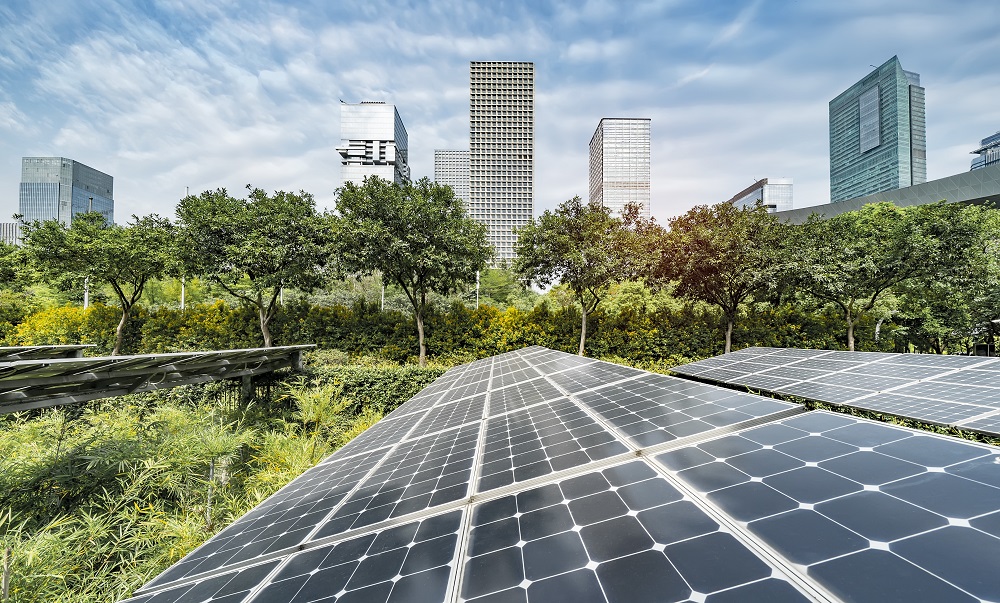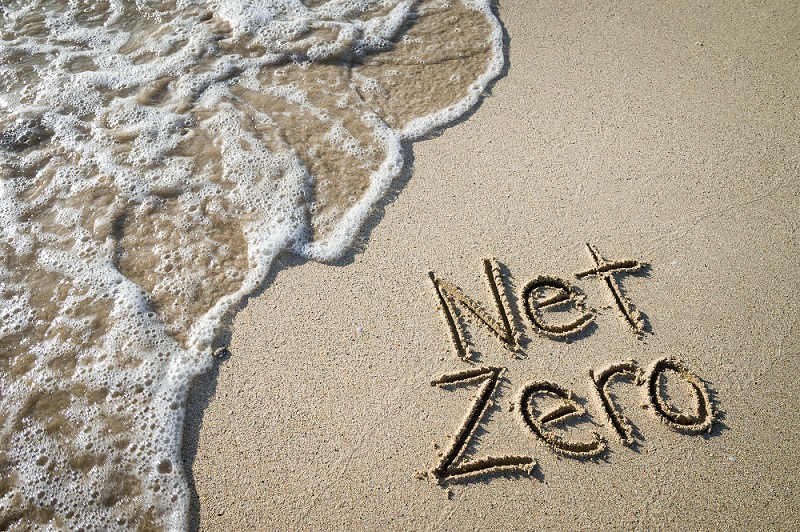IEA roadmap shows how we can get to NetZero and beyond – it’s very tough
We now have for the first time a detailed roadmap on how to get to Net Zero and beyond to rescue the planet – and it’s very tough.
The International Energy Agency has responded with speed and agility to the UK request for input to the upcoming Conference of the Parties (COP26) of the United Nations Climate Change Framework Convention in Glasgow in November.
Its special report is a landmark in the development of coherent strategies to limit global heating to a rise of under 1.5 degrees Celsius. It’s also much needed because, frankly, progress on actions to reduce impacts on the climate and environment has been depressingly slow. It’s true that the list of nations pledging to achieve net-zero emissions is growing.
But the report, “Net Zero by 2050: a Roadmap for the Global Energy Sector”, is stark in its assessment that even if all these pledges are fulfilled, they are not enough to reduce energy-related CO2 emissions to net zero by 2050 and so give us a chance of limiting the rise in global temperature. The pledges to date would still leave around 22 billion tonnes of CO2 emissions worldwide in 2050. The continuation of that trend would be consistent with a temperature rise in 2100 of around 2.1 °C.
Net zero energy system
The IEA deserves praise for “Net Zero by 2050”, not least because it is the first comprehensive study of how we – in the global sense – can make the transition to a net zero energy system within 30 years. At the same time, it shows how it is possible to develop stable and affordable energy supplies across all sectors of every nation, ensuring robust economic growth.
Time is tight and the IEA cautions that the road to net zero is very narrow but it is by no means impossible, with the right actions by governments working both within their borders and through extensive collaboration.
The good news is that if the roadmap is followed and fully fleshed out by every country, then millions of new jobs will be created with impressive and sustainable growth within clean, dynamic and resilient energy economies powered by renewables like solar and wind.
As the report says: “The energy sector is the source of around three‐quarters of greenhouse gas emissions today and holds the key to averting the worst effects of climate change, perhaps the greatest challenge humankind has faced… This calls for nothing less than a complete transformation of how we produce, transport and consume energy.”

400 energy milestones
The roadmap sets more than 400 milestones to guide the journey to net zero by 2050, and it does not pull its punches, stating that as of right now, there should be no investment in new fossil fuel supply projects, and no further final investment decisions for new unabated coal plants.
It says that by 2035 there should be no sales of new internal combustion engine cars – the UK has just set a revised date of 2030 for new vehicles – and the IEA study insists that the global electricity sector should be net zero by 2040.
Looking at the near term, the 2020s should be the decade of massive deployment of all available clean and efficient energy technologies and the report underlines that in its template, the world economy in 2030 will be around 40% larger than now but will consume 7% less energy.
The study advises:
“A major worldwide push to increase energy efficiency is an essential part of these efforts, resulting in the annual rate of energy intensity improvements averaging 4% to 2030 – about three times the average rate achieved over the last two decades. Emissions reductions from the energy sector are not limited to CO2: in our pathway, methane emissions from fossil fuel supply fall by 75% over the next ten years as a result of a global, concerted effort to deploy all available abatement measures and technologies.
“Ever‐cheaper renewable energy technologies give electricity the edge in the race to zero. Our pathway calls for scaling up solar and wind rapidly this decade, reaching annual additions of 630 gigawatts (GW) of solar photovoltaics (PV) and 390 GW of wind by 2030, four‐times the record levels set in 2020. For solar PV, this is equivalent to installing the world’s current largest solar park roughly every day. Hydropower and nuclear, the two largest sources of low‐carbon electricity today, provide an essential foundation for transitions. As the electricity sector becomes cleaner, electrification emerges as a crucial economy‐wide tool for reducing emissions. Electric vehicles (EVs) go from around 5% of global car sales to more than 60% by 2030.”
Total annual energy investment will grow rapidly to $5 trillion by 2030 and this will add an extra 0.4 percentage points a year to global GDP growth (based on a joint analysis with the International Monetary Fund). This growth in private and government spending should create millions of jobs in clean energy, including energy efficiency, as well as in the engineering, manufacturing and construction industries.
All of this will mean that global GDP should be 4% higher by the end of this decade than it would reach on current trends.
Long view on energy transition
If we get this right, global energy demand by 2050 will be around 8% smaller than now but within an economy more than twice as big and a population with 2 billion more people.
In this refreshed and cleaner landscape, nearly 90% of electricity will be generated by renewable sources, with wind and solar PV accounting for almost 70% and much of the remainder from nuclear power. The sun will be the world’s single largest source of total energy supply while fossil fuels will provide a fifth.
The IEA envisages that the fossil fuels which remain will be used in goods where the carbon is embodied in the product such as plastics, in facilities fitted with carbon capture, and in sectors where low-emissions technology options are scarce.
We can do this, it is achievable – but we need to raise our heads, look up and look outwards. The road to net zero has to be globally inclusive. The report states that an integral part of the strategy is to provide electricity to around 785 million people who have no access to it and clean cooking solutions to 2.6 billion people who lack them.
While this comes at a cost of around $40 billion a year, equal to around 1% of average annual energy sector investment, it ensures major health benefits through reduction in indoor air pollution, cutting the number of premature deaths by 2.5 million a year.

More spending on R&D
It’s reassuring to know that most of the global reductions in CO2 emissions needed for the pathway to succeed between now and 2030 come from technologies readily available now. The report forecasts that advances in technology should ensure that in 2050 almost 50% of the emissions reductions will come from technologies currently only at the demonstration or prototype phase.
However, this clearly is only achievable if governments rapidly increase and reprioritise spending on research and development to be at the core of energy and climate policy, demonstrating and deploying clean energy technologies.
It’s also clear from the IEA report that much more progress will be necessary in the areas of advanced batteries, electrolysers for hydrogen, and direct air capture and storage, as well as more efficient and less polluting biofuels.
Net zero challenges
The report is realistic in its assessment of the challenges and uncertainties that lie ahead. It is robust in its understanding that the scale and speed of this transition is impossible without behavioural change and the sustained support of everyone.
We need to fully grasp the fact that these changes will touch and change many aspects of people’s lives, from transport, heating and cooking to urban planning and jobs. The IEA calculates that 55% of the cumulative emissions reductions in the pathway are linked to consumer choices such as purchasing an electric vehicle, retrofitting a house with energy-efficient technologies or installing a heat pump.
Behavioural changes, particularly in advanced economies such as walking, cycling or choosing public transport instead of using a polluting vehicle, to foregoing a long‐haul flight would contribute around 4% of cumulative emissions reductions.
People will need support from government as household energy expenditure rises gently (as a share of disposable income) in emerging market and developing economies, with rising bills and new costs like buying efficient appliances. Policy tools that can direct support to the poorest include tax credits, loans and targeted subsidies.
As IEA executive director Fatih Birol advises:
“The clean energy transition is for and about people. Our roadmap shows that the enormous challenge of rapidly transitioning to a net zero energy system is also a huge opportunity for our economies. The transition must be fair and inclusive, leaving nobody behind. We have to ensure that developing economies receive the financing and technological know-how they need to build out their energy systems to meet the needs of their expanding populations and economies in a sustainable way.”

Energy security
The IEA vision also comes with new energy security challenges while longstanding ones will remain, despite the declining role of oil and gas. This contraction of fossil-fuel production will have far-reaching implications for the countries and companies currently involved, with supplies concentrated in a small number of low-cost producers. The IEA forecasts that OPEC’s share of a much-reduced global oil supply would rise from around 37% in recent years to 52% in 2050 – near monopoly conditions that will have to be managed with skill and wisdom.
There will also be more energy security challenges from the increasing importance of electricity which would include variability of supply from some renewables as well as cybersecurity risks. We will also have to address the effects of rising dependence on critical minerals required for clean energy technologies and infrastructure. Supply and demand will ensure that we have to manage the risks of price volatility and supply disruptions that could affect the transition.
We can agree that the key pillars of decarbonisation of the global energy system are energy efficiency, behavioural changes, electrification, renewables, hydrogen and hydrogen‐based fuels, bioenergy and carbon capture. We will need our governments to be visionary, agile, skilful, inclusive and wise.
At stake is the future of the planet and on offer is the prospect of vibrant, sustainable economies with millions of jobs. We will know after COP26 in November whether this the path we will follow.
Download the full report: Net Zero by 2050: A Roadmap for the Global Energy Sector
Find out how we can help your business.
0333 123 5464